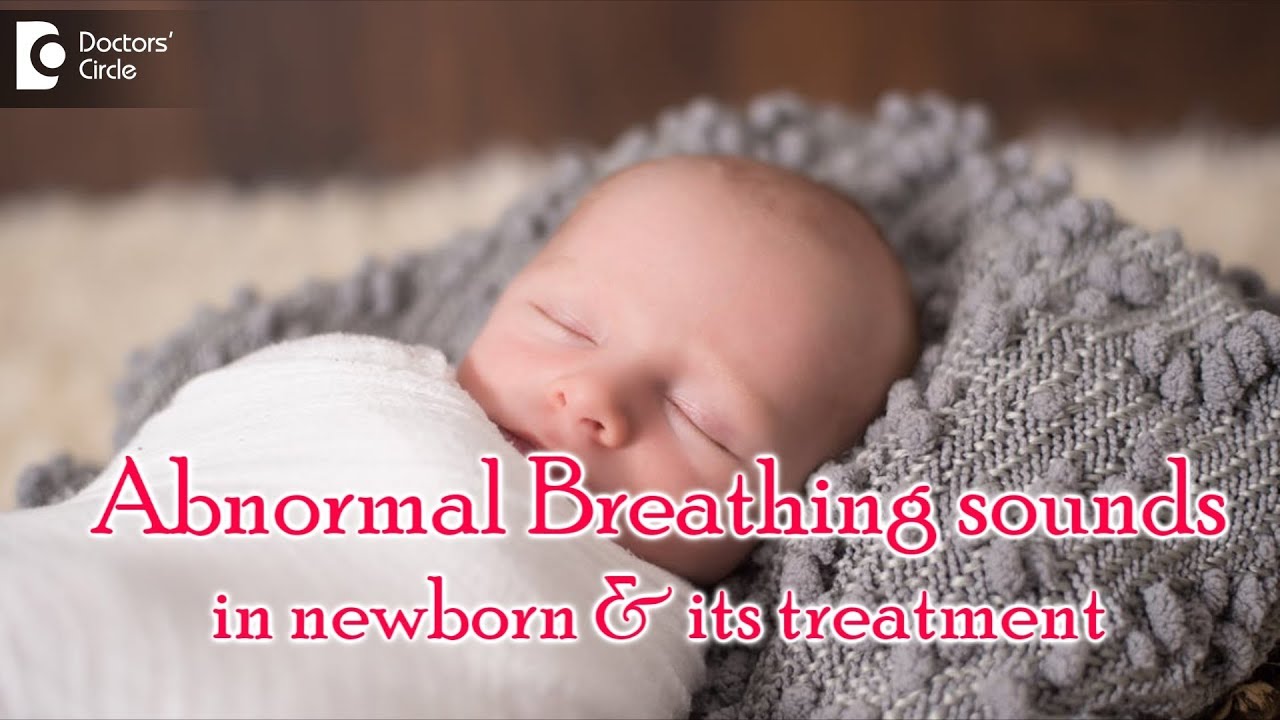
Newborn baby’s breath sounds. New-borns tends to have an irregular breathing pattern that alternates between fats and slow with occasional pauses. If a baby makes sound while breathing, make note of that is the sound like this will determine is if there is a probe in the breathing passage and where. Sots and grunts happens because babies breathe through their noses, this allows them to feed at the same time while breathing. As the baby cant blow her own nose, mucus stays there and produces a whistle, sniffle or a snot as air passes through. If mucus descends into the back of the baby’s throat, pharynx, it causes a gurgle. Mucus moves down the baby’s voice, which is called the larynx or the windpipe, trachea which will make the sound chesty. If we place hand on the baby’s chest, we feel a gentle rattle this is a sound from the larynx. The breathing may remain like this for several weeks but there is nothing to worry. A small blockage in the nostrils produce whistling noise that clears when you suction it out. New-born babies breathe out of their noses and not their mouths. This is a good trick that help them to breathe and eat at the same time. The little noses have small air passages. So little bit of mucus or dried milk can make the breathing passage even smaller coughing whistling noise or difficulty in moving the air in and out. Sometimes the newborns will have hoarse crying and barking cough. A blockage in the larynx, the windpipe often due to mucus hoarse crying and a barking cough. This may be assign on croup, an infection of the larynx, trachea and bronchial tubes. On occasions, you could hear, high pitched, squeaky sound called stridor, known as laryngomalacia. It is worse when child is lying on his or her back and it is caused by excessive tissue in the child’s larynx and is harmless it typically passes by the time a child reaches age 2. On occasions, baby can have a deep cough, blockage of bronchi, whistling sound that is wheezy I due to blockage in the bronchial , that is the small airway in the bronchi it makes a Whistling sound and the infant breakout like in condition like bronchiolitis or asthma in later. Sometimes it could be fats laboured breathing. Fluid in the smallest airway, alveoli, can cause pneumonia, an infection due to virus or bacteria. Pneumonia causes fast laboured breathing, bluish discoloration which is called as cyanosis or persistent cough and cracky sound when listened to. Tips to parents to watch your baby breathing when she is well so you can get used to it how to looks. When to worry about baby’s breathings signs of potential worrisome problems in your baby’s breathing can include persistent increased rate of breathing, for example if the breath rate is more than 60 breaths per minute or increased work breath. Some of the signs include grunting at the end of each respiration. This could serve to open up blocked airways or flaring. The baby’s nostrils flared during breathing showing increased efforts or retractions. The muscles of the baby’s chest are visibly seen going in and out showing more deep breath than usual. Cyanosis, this means the blood remains blue and has not got sufficient oxygen from the lungs. In true cyanosis the blood all over the body looks blue. Sometimes the hand and feet of new-born turn bluish but rest of the body is fine. This is not cyanosis but a common response to change of temperature which is called as ocrocyansis. Babies often present with poor feeding pattern, accompanied with noticeable decrease in feeding, lethargic, where the baby’s energy levels may be decreased or baby may present with fever, where infections in the lungs cayse fever. Breathing problems like noisy breathing are not only occasionally normal but worrisome breathing problems on the other hand are persistent. However when it comes to any breathing concerns, be sure you contact your paediatrician.
World’s Largest Video Heath Platform is now in Hindi
Subscribe to – https://www.youtube.com/channel/UCS1y5nTRddMYnozjN9iw0mA for HINDI videos